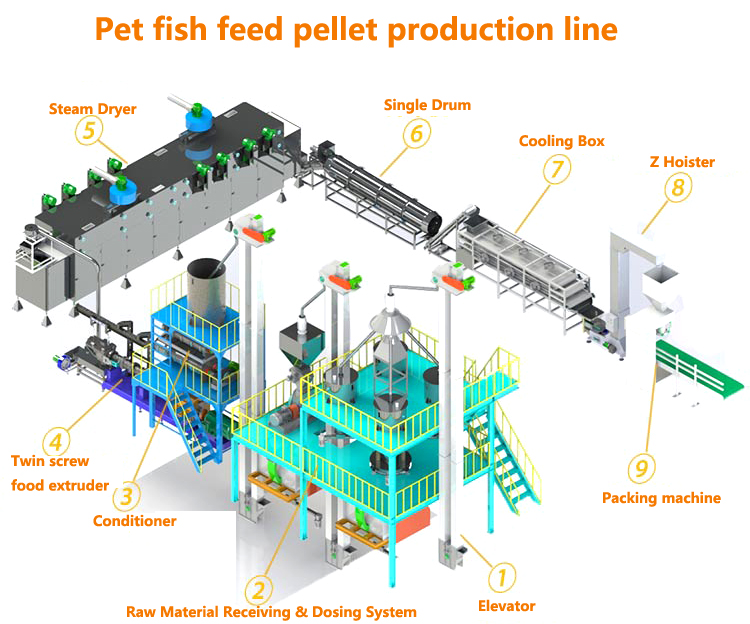Tel:+86-15264102980 Mob:+86-18660429170 Whatsapp: 8615264102980
There are both floating fish feed and sinking fish feeds on the market. Controlling the floating and sinking of fish feed mainly depends on the degree of puffed of fish feed.
The higher the puffing degree of fish feed, the easier it is to float, and the lower the puffing degree, the easier it is to sink.
This article will explain those factors that can affect the degree of puffed of fish feed.

1.Temperature:
The higher the temperature, the easier the fish feed will puffed. So when used as floating fish feed, the temperature setting of the extruder is relatively high.
For example: Zone I 50℃, Zone II 80℃, Zone III 130℃, Zone IV 150℃
The lower the temperature, the lower the degree of puffed of the fish feed. So when making sink fish feed, the extruder temperature setting is relatively low.
For example: Zone I 50℃, Zone II 80℃, Zone III 100℃, Zone IV 110℃
2.Raw material:
We divide the ingredients in the formula into the following categories:
A.Protein, fiber, oil (fish meal, bone meal, soybean meal, etc.)
Such raw materials are not easy to expand, so when the percentage of such raw materials in the formula is higher, the fish feed is more likely to sink.
B.Starch (corn flour, wheat flour, rice flour, etc.)
Starch-based raw materials are easy to expand, so the higher the percentage of such raw materials in the formula, the easier the fish feed is to float.
3.Moisture:
The more water, the harder it is to puff; the less water, the easier it is to puff.
To make floating fish feed, the moisture content in the raw materials is about 13%-15%.
To make sinking fish feed, the moisture content in the raw materials is about 20%.
For more information on fish feed equipment please contact us
Tel:+86-15264102980
Mobile:+86-18660429170
Email: kevin@fldmachine.com
Whatsapp: 8615264102980


Copyright 2025 © Jinan FLD Machinery CO.,LTD All Rights Reserved.